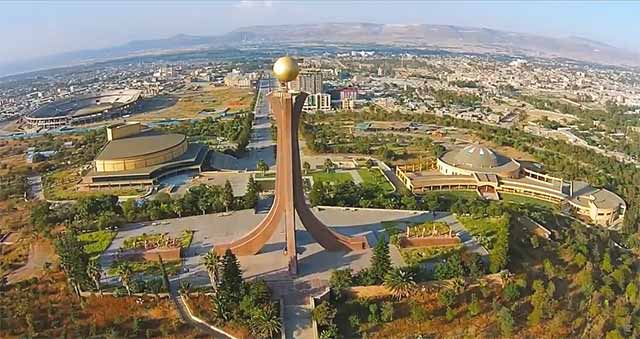By GEBREHIWOT HAILESLASE
Adigrat, Ethiopia – Despite recent reports on social media suggesting the withdrawal of Eritrean forces from Ethiopia’s Tigray region, local officials and residents insist that Eritrean troops remain firmly entrenched in several key border areas.
These include Zalambessa, Rama, Shiraro, and Badme—territories that have been the subject of long-standing tensions between Eritrea and Ethiopia.
A regional official, speaking to the BBC Tigrinya on condition of anonymity, confirmed that a military checkpoint operated by Eritrean forces along the road from Adigrat to Zalambessa has been temporarily removed.
The checkpoint, established on May 10, 2017, after the outbreak of the Tigray War, had been used to search individuals and vehicles traveling through the area.
While the removal of the checkpoint may signal a shift, the same official stated that Eritrean soldiers remain in various locations including the Adi Haqi neighborhood in Zalambessa, Zbanhut, parts of the Addis Alem area, Adi Aserte, and areas surrounding Irob.
He added that no Ethiopian federal or Tigray regional forces are visibly present in these locations.
The Ethiopian Federal Customs Authority has also maintained a checkpoint in Fatsi, about 20 kilometers from Zalambessa, since 2016 to monitor smuggling activities.
This, combined with the ongoing military presence, continues to hinder the resumption of regular border trade.
Residents of other border towns, such as Shiraro and Rama, echoed the regional official’s claims, dismissing social media reports of an Eritrean withdrawal as inaccurate.
A resident of Shiraro listed several villages—Adi Tser, Bchlama, Sembel, Badme, Hadsh Adi, Dembo Gudamu, and Dembo Mongil—as still under Eritrean control.
“What is being spread on social media is a lie,” he said. “There is no federal force; there is no Tigray security force. Only the Eritrean army is in the area.”
Despite the ongoing occupation, residents have reported some limited interactions with Eritrean forces.
Locals are allowed to access rivers in Eritrean-controlled territory to water their livestock.
When animals cross the border, ad hoc agreements between Eritrean and Tigray forces facilitate their return—an informal sign of local cooperation, though no official public or transportation services have resumed.
Background: The Tigray Conflict
The Tigray conflict began in November 2020 when tensions between the federal government of Ethiopia and the Tigray People’s Liberation Front (TPLF)—the ruling party in the Tigray region—erupted into full-scale war.
The conflict followed months of political strife after the federal government postponed national elections in 2020 and accused the TPLF of attacking a federal military base.
The war drew in multiple actors, including the Ethiopian National Defense Forces (ENDF), regional militias, and Eritrean troops.
Eritrea entered the conflict in support of Ethiopia’s federal forces, seizing border areas and carrying out military operations deep inside Tigray.
The presence of Eritrean forces was initially denied by both governments but was later confirmed following international scrutiny.
The war was marked by widespread atrocities, including reports of mass killings, sexual violence, and forced displacement.
Humanitarian access to Tigray was severely restricted for much of the conflict, leaving millions in need of aid.
A peace deal signed in November 2022 between the Ethiopian federal government and the TPLF formally ended the active fighting.
However, the agreement made limited mention of Eritrean forces, whose continued presence in Tigray remains one of the unresolved issues following the cessation of hostilities.
More than two years after the war’s official end, questions about territorial control, security, and the normalization of life in Tigray persist.
The continued occupation by Eritrean troops in contested areas highlights the fragile nature of peace and the complex geopolitics of the Horn of Africa.



